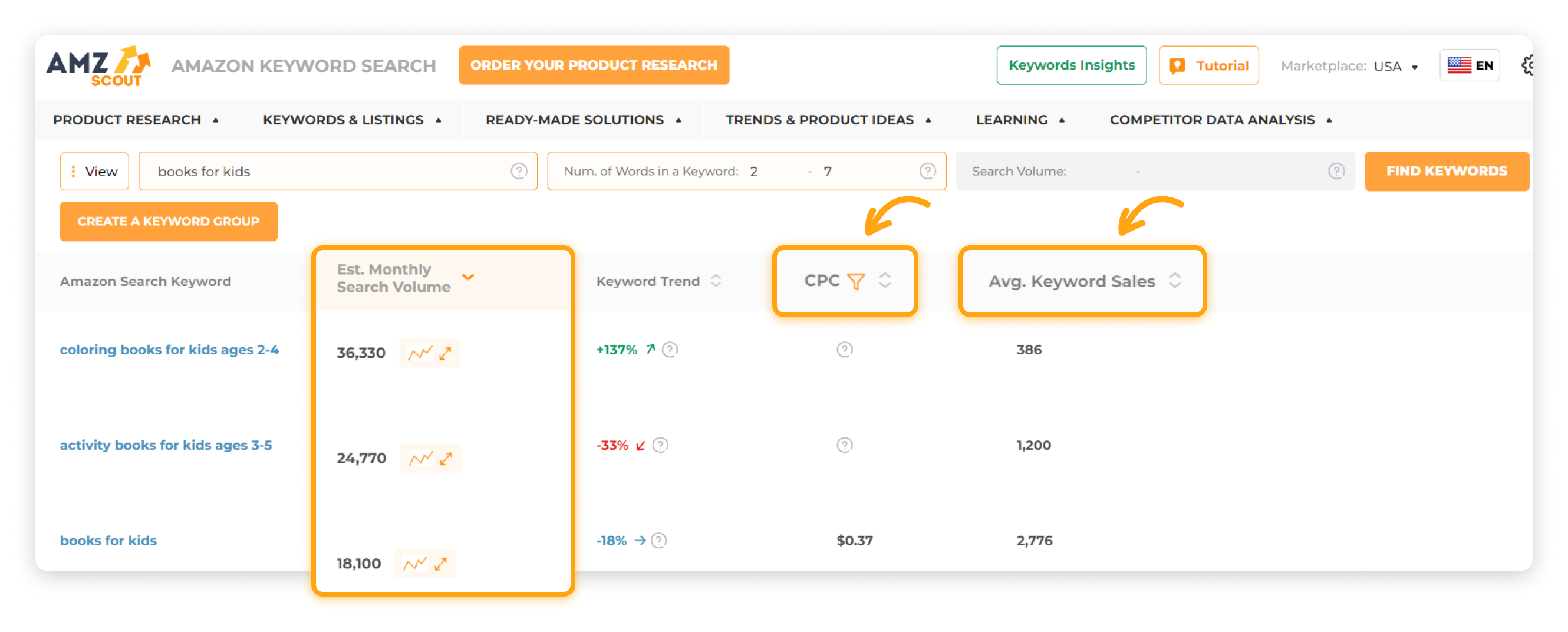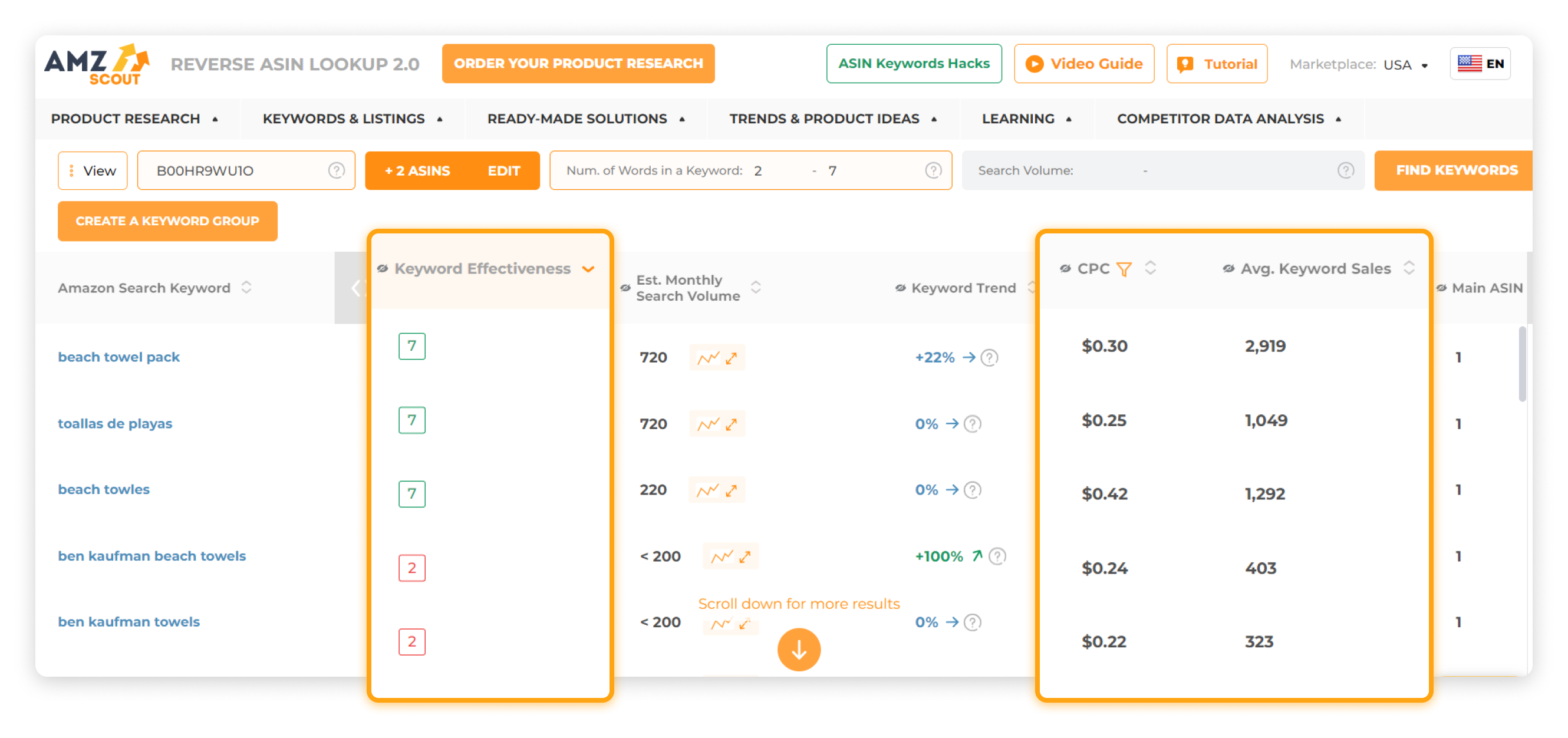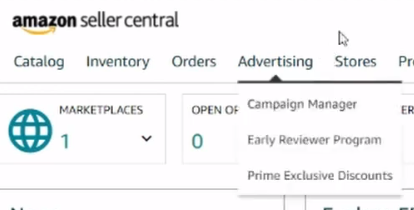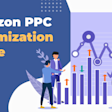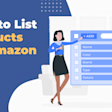
How to Find and Choose Effective Keywords for Amazon Ads
PPC is an effective method for increasing your product's visibility quickly and driving traffic. The success of your advertising depends primarily on the relevance of the keywords you use. However, finding the most suitable search terms can be quite challenging.
In this article, we'll explain how to do PPC keyword research for Amazon properly.
Table of contents
Why Choosing Keywords Is Important
Keywords are the backbone of your listings and PPC campaigns, and picking the right ones is crucial for your business success and sales. Choosing the most effective keywords offers several key benefits, including:
Budget efficiency: Using relevant keywords attracts the right audience, ensuring that your budget is utilized effectively. This allows you to avoid wasting money on clicks that are unlikely to convert.
Higher conversion rates: Ads are displayed to users based on their search history. By optimizing your ad settings, you can target users with higher purchase intent, resulting in better conversion rates.
Improved organic ranking: Ad campaigns drive more sales, which can boost your organic rankings on Amazon. Additionally, some Amazon PPC keywords may be relevant for your product listings, helping attract customers over the long term.
Competitive advantage: By incorporating terms that are driving traffic to your listings and generating sales from PPC campaigns, you can position your products more effectively and attract a more relevant audience. This way, you can outperform your competitors in search results and ad placements.
Conducting thorough keyword research is crucial to selecting the best keywords for your product. Below, we'll share methods on how to find the right keywords for Amazon ads.
How to Find the Best Keywords for Amazon Ads
There are several ways to research Amazon ads keywords. To ensure that you gather precise data and avoid wasting time, consider these three streamlined approaches:
#1 Gather a List of Popular Niche Keywords
To find effective keywords for your niche, start by identifying the most-searched terms. Analytical tools can help to simplify this process, with AMZScout’s Keyword Search being a top choice. To start, just follow these three easy steps:
1. Go to the AMZScout Keyword Search page. Start your free trial by entering your email address.
2. Start your search. Enter a word or a phrase related to your product. For example, if you sell kids' books, enter books for kids. You can also use additional criteria (like keyword count or search volume) to refine your search.
3. Get your keywords. Click Find Keywords to generate a list. You’ll see the results sorted by estimated monthly search volume, with the top results being shown first.
Consider the Cost-Per-Click (CPC) for each keyword, which shows how much you'll pay per click, along with columns for average keyword sales. This will help you identify keywords that strike a balance between high sales and low CPC, allowing you to manage your budget effectively, and choose keywords that offer the best return on investment.
You can export the results lists and then search for additional phrases such as kids books or books for children. This will help you pinpoint the highest-performing keywords in your niche.
#2 Analyze Competitors’ Keywords
When you’re launching a new product, it's helpful to see what your competitors are doing to help you implement the best practices. This also helps you discover new keywords, not only for your PPC campaigns but for your product listing as well.
A great way to do this is by using keyword tools like the Reverse ASIN Lookup. You simply enter your competitor’s ASIN and get a detailed list of the keywords they are targeting. Then you can analyze based on a variety of 11 parameters, with the key ones being:
Keyword effectiveness: Identify which keywords are driving more sales for your competitors.
Keyword trend: See how a keyword’s performance changes over time, allowing you to include or exclude keywords based on their trends.
Number of ranking competitors: See how many other ASINs are competing for the same keywords.
Balance of CPC and keyword sales: Evaluate the balance between Cost-Per-Click (CPC) and average keyword sales to manage your budget effectively.
By analyzing your competitors’ keywords, you can gain valuable insights that can help you refine your own PPC strategy and select the most effective keywords for your own product listing. This approach allows you to position your product more competitively.
Snap up keyword ideas from competitors' pages to list products on Amazon
# 3. Find the Best Keywords from Customer Reviews
Another effective way to identify high-performing keywords for your ads is by analyzing customer reviews—both for your products and those sold by competitors. Reviews reveal how customers naturally describe the product, highlighting key features, commonly used positive terms, and selling pain.
However, analyzing reviews manually can be tedious and time-consuming. You’d need to sift through hundreds of comments, identify patterns, and extract actionable insights. To simplify this process, consider using an AI Review Analyzer. Just enter a product’s ASIN, and the tool will generate a detailed breakdown of customer preferences, highlighting specific phrases that customers frequently use.
Note: For even deeper insights, cross-check these keywords using the tool described in Method 1. This will help you determine which terms have the highest sales potential.
By incorporating these words into your ads, you can capture customers’ attention more effectively by using language they relate to.
#4 Get a Ready-Made List of Keywords
If you lack the time or experience to conduct research or analyze different parameters for selecting the best-performing keywords on your own, Sellerhook offers an excellent solution. Their experts can identify relevant keywords for your products and provide strategies to enhance the performance of your listing and PPC.
Here’s how to use Sellerhook’s services:
1. Go to the Sellerhook website and order your keyword research report.
2. Answer a few questions about your product and business. This helps the team tailor their research to your specific needs.
3. Receive your keyword list. Within 8-10 business days, you’ll receive an email containing a detailed report that provides a list of in-demand keywords, tips for using them in listings and PPC, and more.
By using Sellerhook, you can enhance your product’s position in Amazon search results effortlessly and avoid wasting your budget on ineffective terms. This comprehensive analysis helps you assess your niche and adjust your strategy, giving you a competitive advantage and saving you time on competitor research.
Choosing and Adding Keywords to Campaigns
There are different types of Amazon PPC ads: Sponsored products, Sponsored brands, and Sponsored display. The last one doesn't target keywords, but instead it aims to target specific customers who have already visited your product page. Sponsored brands advertise your own brand, while sponsored products display an ad for a specific product. This is the most common ad type used by Amazon sellers.
Let’s discuss how to choose and add keywords to your Sponsored Products or Sponsored Brands ads:
1. In your Amazon Seller Central account, select Campaign Manager in the Advertising section.
2. Click Create a Campaign and enter details (name, duration, and more). Choose Manual Targeting.
3. Select how precisely your keywords align with user search queries. There are three match types from which to choose:
Broad Match: Your ads will appear for queries related to your keyword. To maximize your reach, choose broad keywords with a high search volume, like sneakers or sports shoes. However, be aware that this can also lead to irrelevant clicks and potential overspending.
Phrase Match: Your ads will appear for phrases that include your keywords. This match type is cost-effective, as it balances relevance and reach. Choose more specific phrases that still have various formulations, such as women’s sneakers or yellow sneakers.
Exact Match: Your ads will appear only for queries that contain the exact match for your keyword. These are typically chosen based on previous campaign analysis to help you control your ad spending by targeting a more specific audience. Focus on phrases with a high sales-to-click ratio, such as women’s yellow sneakers size 5, to maximize your return on investment.
4. Set up your daily budget and bids. To avoid overspending, set a daily budget limit. Additionally, by setting up bids, you can control the amount you're willing to pay for each click.
5. Add negative keywords (optional). You can add negative keywords right away, or analyze campaign results over a couple of weeks to help you identify terms that attract clicks but don’t lead to sales. The phrases you set as Exact Match should also be negative from Broad or Phrase Match campaigns.
This way, you can avoid targeting audiences for whom your ads are irrelevant. For instance, if you sell yellow women’s sneakers, it’s important to exclude irrelevant terms like red sneakers or men’s sneakers to avoid irrelevant clicks and optimize your ad budget.
6. Launch your campaign. Once you launch, remember to monitor your PPC campaigns regularly to see what performs well and what doesn't. Use AMZScout's Keyword Tracker to help you monitor keyword ranking changes. This enables you to identify which irrelevant queries you need to exclude so you can allocate your ad budget more effectively to top-performing keywords.
FAQs
Are Amazon SEO and PPC keywords the same?
Amazon SEO and PPC keywords often come from the same pool, so the words in your listings and titles can also be used in your ad campaigns. SEO keywords are integrated into your product listings to enhance your ranking among organic search results without incurring costs. In contrast, PPC keywords are used in paid ads to drive targeted traffic, requiring a budget for visibility.
How many keywords should I use for PPC?
While there's no exact number for how many keywords to use in a PPC ad campaign, Amazon recommends starting with at least 25. This allows you to test a variety of keywords to see which ones perform best. As you gather data, you can adjust your keyword selection to focus on those that drive the most traffic and conversions, enhancing the effectiveness of your PPC campaigns.
Is Amazon PPC necessary?
Running Amazon PPC is not mandatory, but it can expand your audience and boost sales significantly. This is particularly crucial when launching a new product, as it helps attract customers and garner reviews. Amazon PPC can also promote your special offers effectively, helping you distinguish your products from the competition.
What is Amazon PPC optimization?
Amazon PPC optimization refers to a set of strategies designed to enhance the performance of your advertising campaigns. This involves focusing on key metrics such as reducing campaign costs, increasing customer engagement, and driving more conversions. To learn how to optimize your PPC campaigns effectively, check out this comprehensive guide.
Conclusion
Conducting Amazon PPC keyword research effectively can be streamlined greatly by using analytical tools. Use AMZScout to find the best search terms for your product, or rely on Sellerhook’s experts to get the top competitor keywords for your PPC. This approach saves you time while improving your chances of ranking higher among search results, ultimately boosting your sales.
